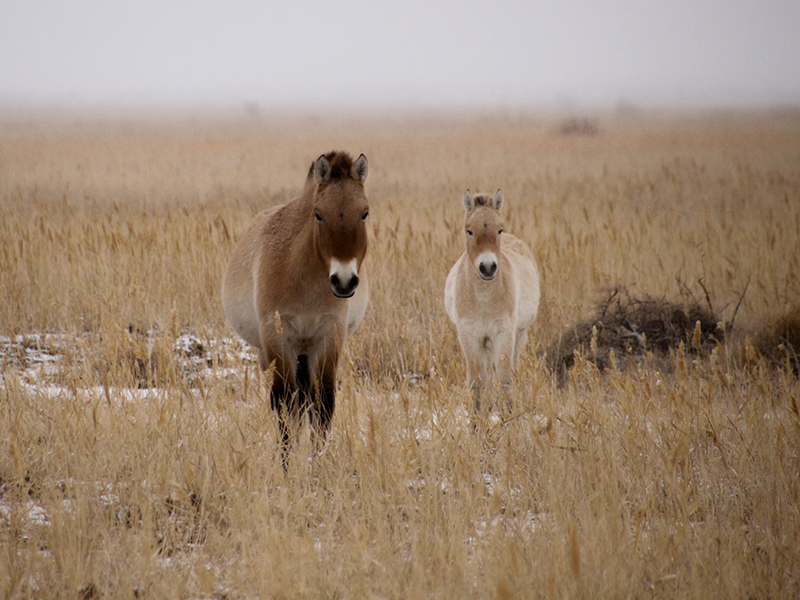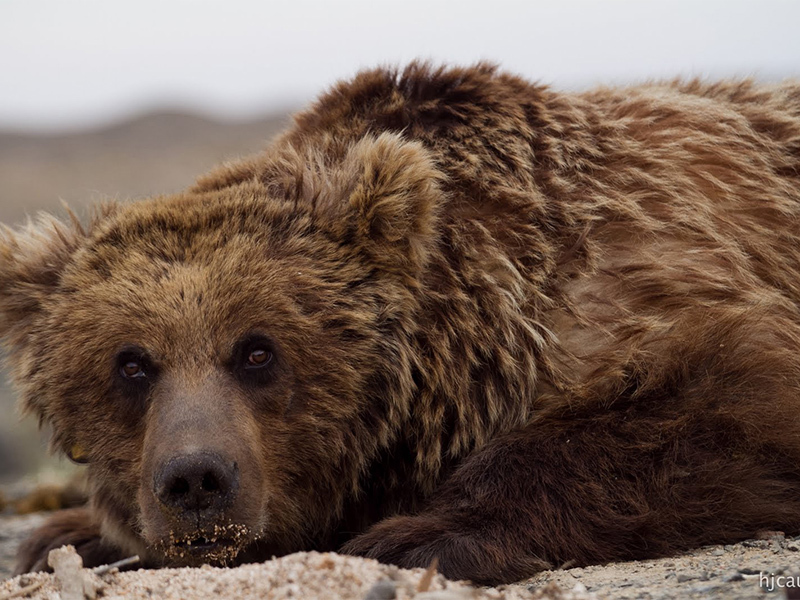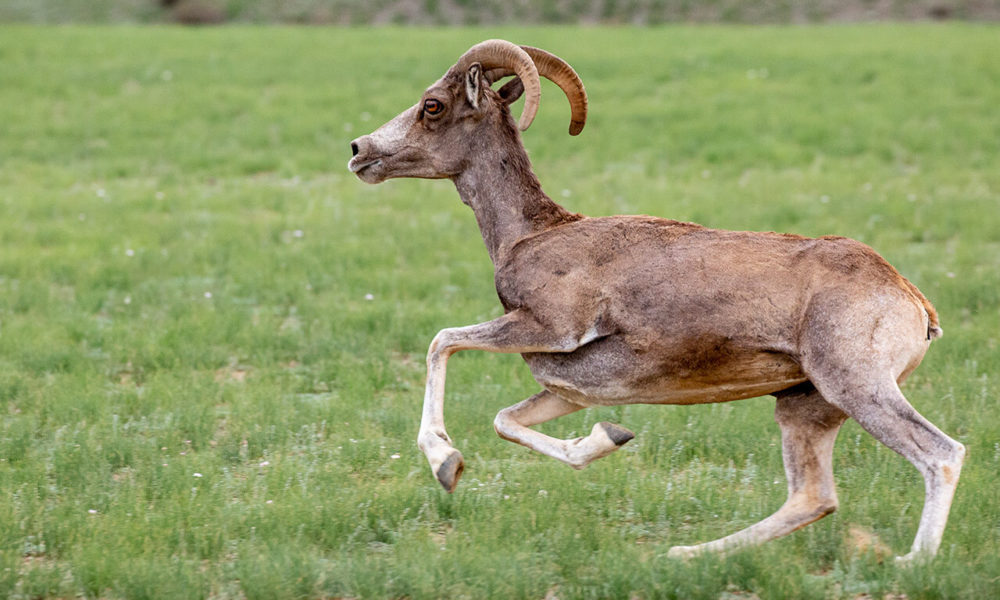One of Earth’s largest landscapes undisturbed by mankind, the Gobi Desert harbors some of the most unique species of animals.
Here the truly mercurial climate ranges from -24°C (-11° F) in the winter and up to + 45°C (113° F) in the summer—a variance that requires the species who inhabit the Gobi to have adapted uniquely. In addition to the temperature chances—which can fluctuate widely in just a single day—the Gobi is also quite arid in certain areas, seeing dust storms in both spring and autumn.
Yet what makes this land so inhospitable in one sense has also brought out astonishing evolutionary traits in the animals, and makes the Gobi such a breathtaking place to visit—for the astonishing beauty of the land and the wonderous diversity of the wildlife.
While the wildlife may be quite scarce in the Gobi, sightings of its rarer species are all the more thrilling. Nomadic Expeditions consciously and thoughtfully arranges trips to the isolated areas of many of these wildlife species. We also work with local protection and conservation organization to help and support their projects that are launched on this unique speices of the Gobi Desert. With the help of our well-trained guides, you will be able to spot a number of these rare species in their natural habitats.
Wild Bactrian Camel
Wild bactrian camels are one of the few animals that can adapt in Gobi’s brutal and harsh conditions. Found in Central Asia especially from southern Mongolia and Northern China, wild Bactrian camels have thick, shaggy coats that can protect them from cold winter and hair that will fall away in May or June before the hot summer. Unlike other creatures of the world, they can drink salty water to survive. Like other camel species, wild Bactrian camels have the ability to endure long periods of travel without water. They store their fat in their humps and when there is nothing to eat or drink, those fat stores can be converted into energy.
Saiga Antelope or Mongolian Saiga
Between 1760 and 1953, 10 species of saigas were identified, nine of which became extinct. There are now only two subspecies remaining, one of which is the Mongolian Saiga. They have a face similar to that of a camel with the horns and body of an antelope. Very rare and found only in Mongolia, this ancient animal once coexisted with the animals of the Ice Age, such as woolly rhinos and saber-toothed tigers.
Argali or Wild Sheep
The largest wild sheep living in the mountainous and highlands of Central Asia, the Argali are the wild ancestors of sheep. They are now one of the rarest animals in the world. Hunting has been prohibited by law since 1953, and they have been listed as a rare species by the Mongolian government since 2012. Their general appearance is similar to that of a Mongolian sheep, but it has adapted to the conditions of the Gobi. (pictured above)
Takhi or Przewalski’s Horse
Przewalski’s horse is a wild horse that lives in the steppes of Mongolia. In 1879, Nikolai Prezhevalsky, a Russian explorer, first discovered the wild horse in the Mongolian Gobi. The Przewalski’s horse has never been domesticated and amazingly accelerates up to 60 to 70 kilometers per hour. Hunting has been prohibited by law in Mongolia since 1930, and it was included in the Law on Fauna as a very rare animal and registered in the Mongolian Red Book and the International Red Book. The area in which it lives is protected by the Great Gobi Strictly Protected Area and the Lesser Gobi Strictly Protected Area.

Khulan or Wild Ass
The Mongolian wild ass is a subspecies of the Onager and can only be seen in the Gobi. The animal is an herbivore that can live on the thin grasses, shrubs, and trees found in the barren environment of the Gobi. The herds move in a nomadic pattern, pursuing the unpredictable resources of their desert environment. They can travel thousands of kilometers in just a few weeks in search of food and water, and their annual range can cover up to 70,000 square km. They are known to dig holes at dry riverbeds to access sub-surface water during hot summers, and these holes are then also used by other species to access water.
Snow Leopard
The Snow Leopard is a symbol of the high mountains, not only in Mongolia but also in Central Asia. Although it belongs to the “cat species,” it is the least studied and most mysterious of all the species. This is because snow leopards live at an altitude of 3,000 meters above sea level, which is a low-oxygen, harsh climate. An estimated 20 percent of the world’s snow leopards are in Mongolia, with about 700 snow leopards in the northern part of Mongolia, in the Altai mountains. As a partner of WWF Mongolia, Nomadic Expeditions provides a Snow Leapoard trip in Western Mongolia, which helps the WWF to succesfully run some of their projects to protect and preserve the Snow Leopards at Jargalant Khairkhan Mountain in the Hovd province.

Siberian Ibex
Another animal listed in red as endangered, the Siberian Ibex can be spotted on the slopes of mountains, hills, steep cliffs, and narrow gorges. The ibex is a rare and important game animal and is banned from hunting in Mongolia. Ibex are usually found in groups of 2 to 5, but as it gets colder the number of ibex in a herd increases and they tend to gather in herds of 20 in winter. Their appearance is similar to domestic goats, with a large body, short neck, and pointed ears. At Yol Valley National Park, only 1.5 hours away from Three Camel Lodge, you can see these fantastic animals on a casual hike.
Mazaalai or Gobi bear
The Gobi bear is a very special, very rare and endangered species. Adapted to the harsh conditions of the Gobi, it lives in the middle and low Gobi highlands—hills and depressions at an altitude of 1,300-2,300 meters in the Trans-Altai Gobi. They also live among the oases and open springs—which many travelers are surprised to learn the Gobi has. Like other bears, the Gobi bear hibernates during the winter and actively spends the warm seasons being active. The Gobi bear is a mixed carnivore and feeds on both animals and plants. A reclusive animal—very alert yet shy—it can sense smells and sounds from a great distance. Few people have seen them in the desert because Gobi bears are prone to run from people. Their population is small, and because of their remote living biologists are unable to determine the exact number currently living in the wild. It is estimated that the number is a mere 22 to 31.


